Our Blog - Auvillar, France
The town of Auvillar is very old, and it was an important town from the 11th century. It was a Gallo-Roman oppidum named Alta Villa and was protected from attack over the centuries due to an excellent location on a rocky spur. In the 18th century, it was famous for the manufacture of goose quill pens and stoneware. It was also a commercial center with a working port until the 19th century. It is listed as one of the Most Beautiful Villages of France (Les Plus Beaux Villages) and so we of course had to take a look.
Auvillar is a stopover town on the way to Santiago de Compostela. Scattered in the alleys and on the squares, small statues of St. Jacques, as well as different pilgrims, can be found attached to the side of buildings. Here are just a few that I saw.
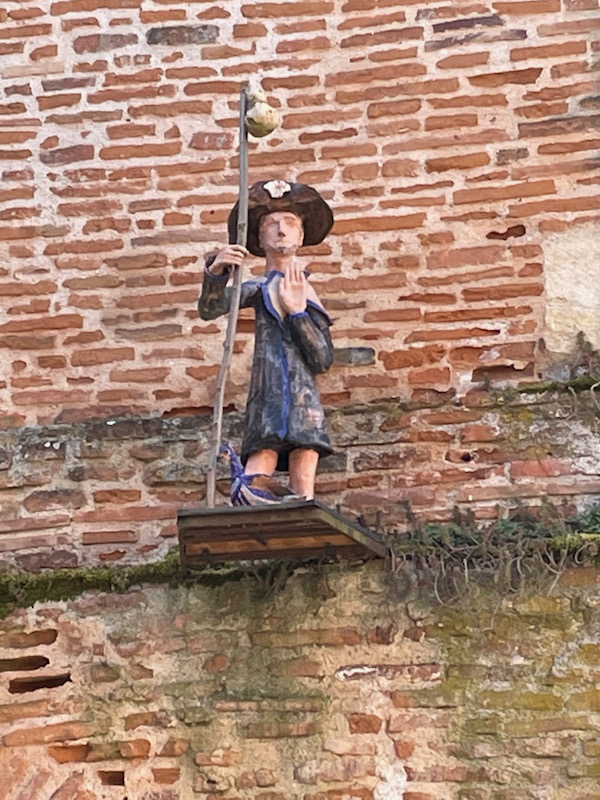
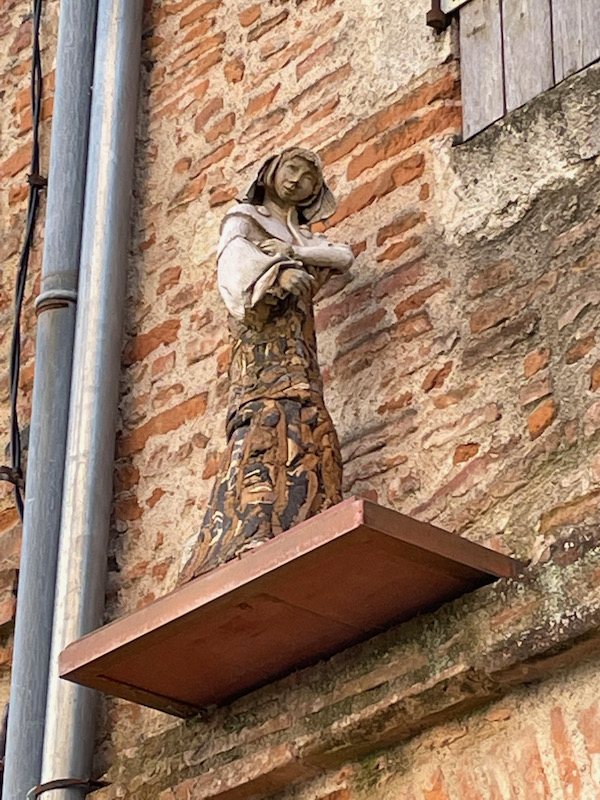
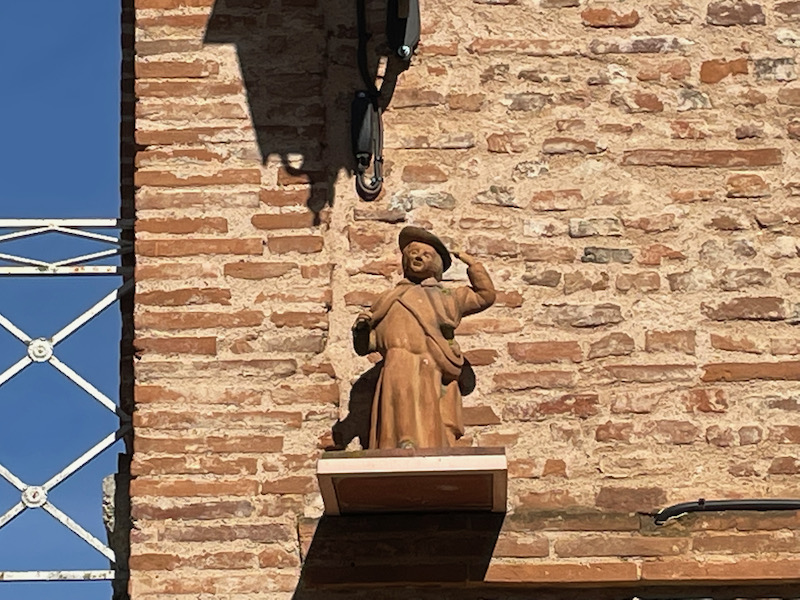
The clock tower, or Tour de l'Horloge, is a monumental 17th century gate that provides access to the historic center of the village. It now houses the shipping museum.
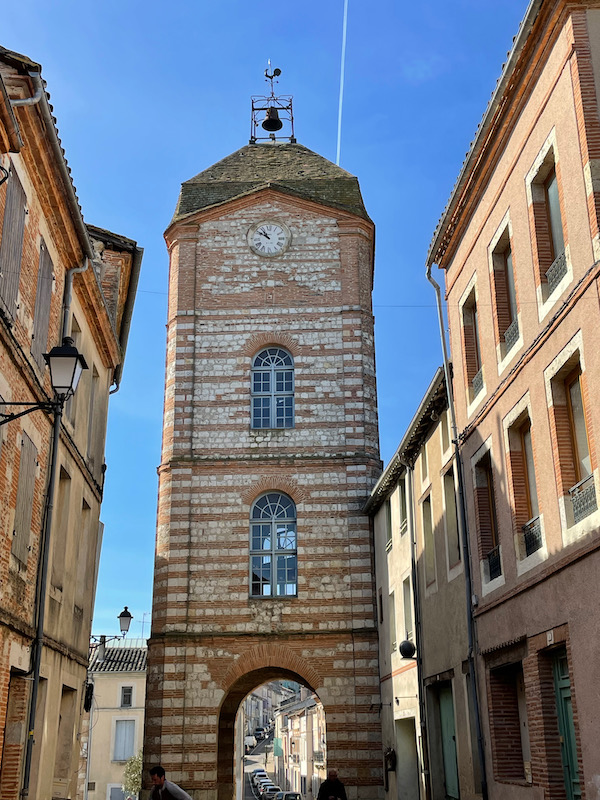
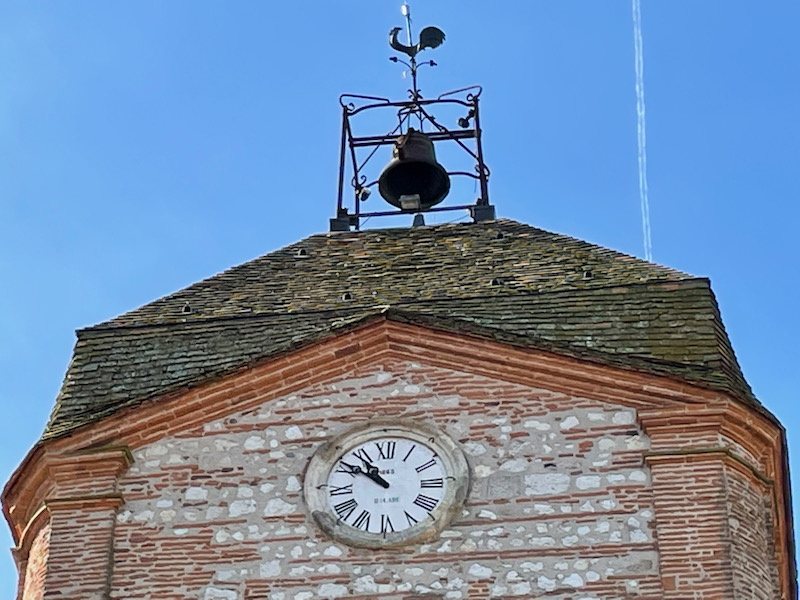
The historic center revolves around a triangular square, lined with rich brick and stone residences from the 17th and 18th centuries. These shows how rich of a merchant city it was. The houses have arcades on the ground floor, with Tuscan-style columns. In the middle of the square is a unique circular market hall (most that we have been are square or rectangular). We happened to be there on Sunday morning during the little town market. The covered hall dates from the start of the 19th century.
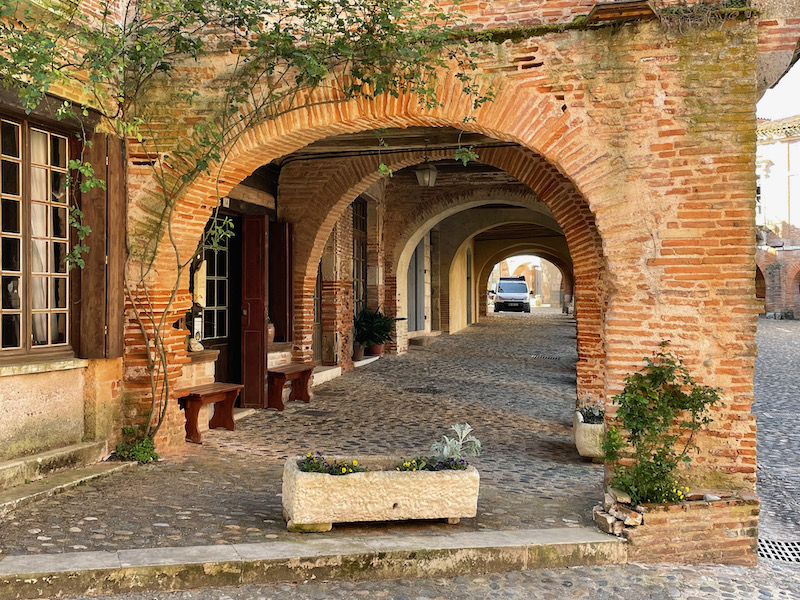
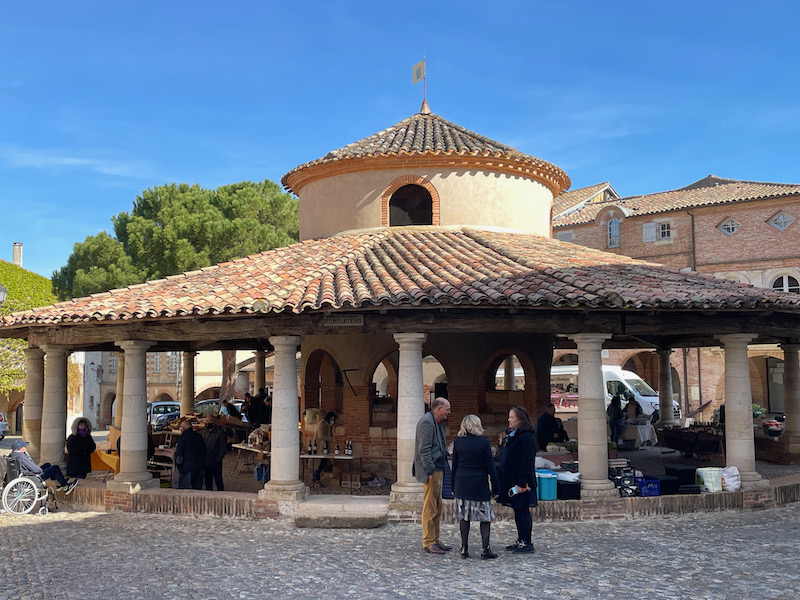
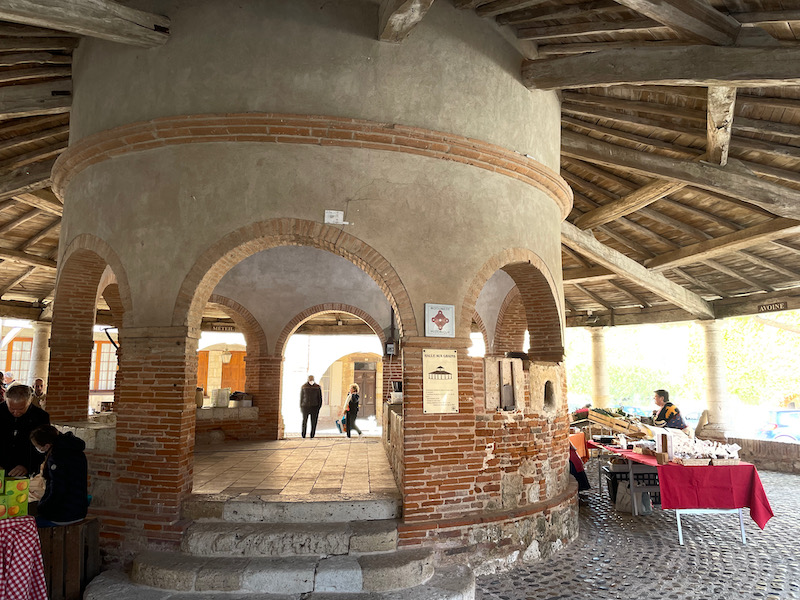
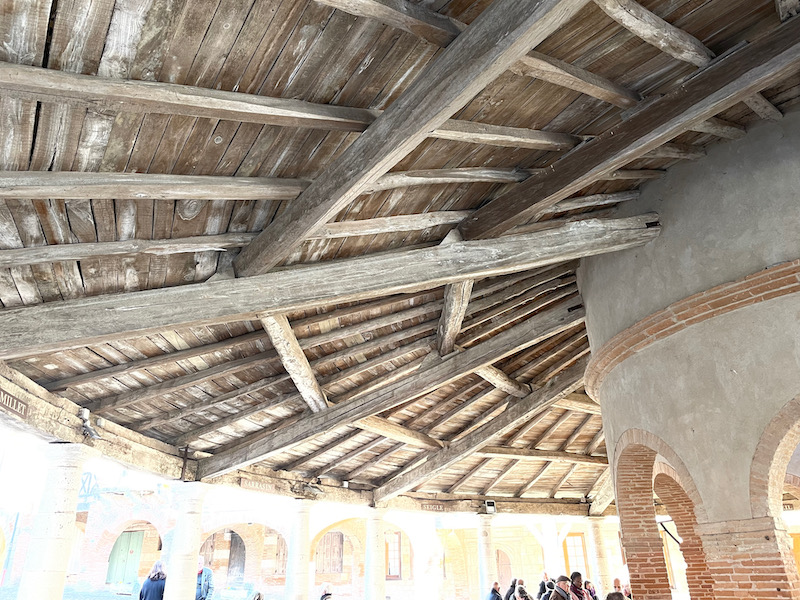
As we walked around on the cobble-stone streets, we saw several half-timbered and corbelled houses. A couple of them had broken windows, so we assume they were vacant :-) You can see the arcades under a few of them, and one had a really lovely white stone entryway.
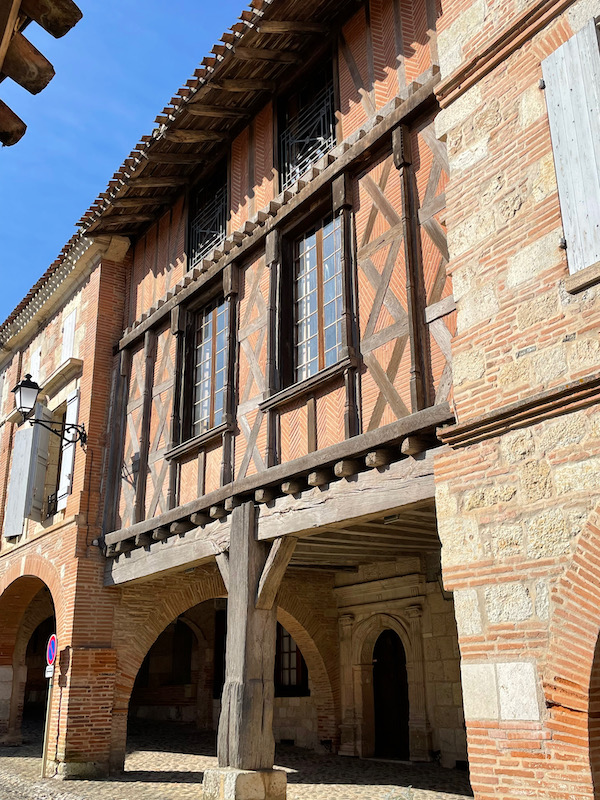
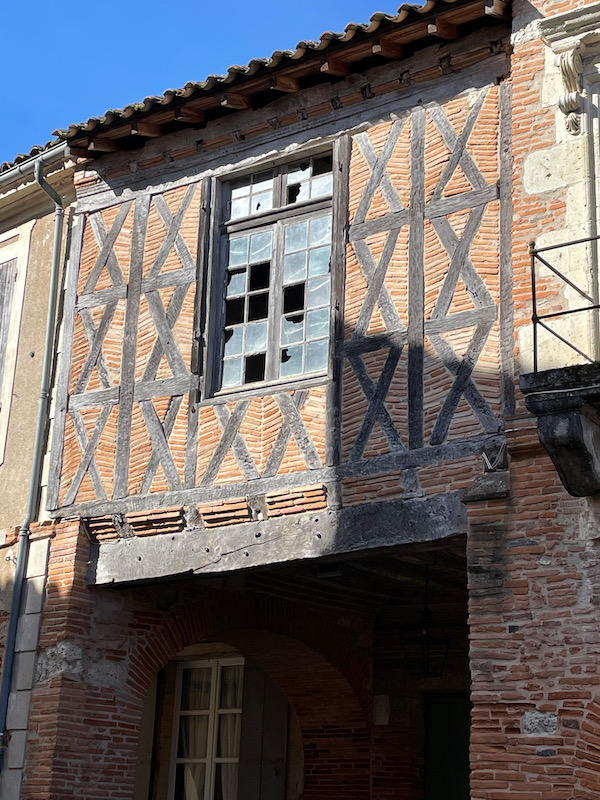
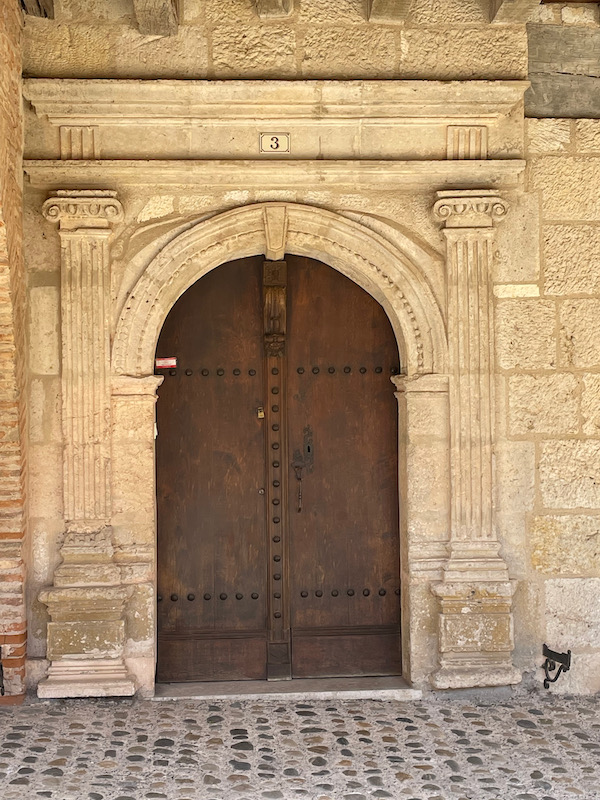
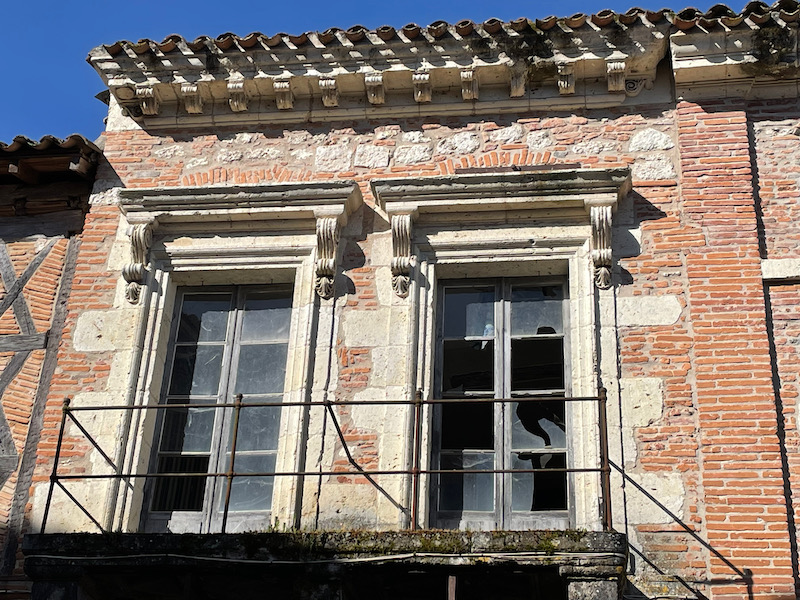
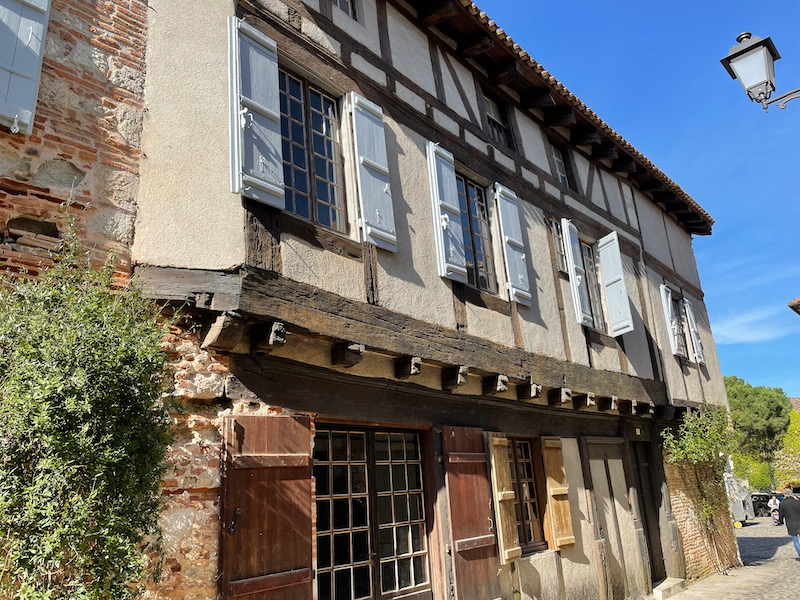
The Saint Pierre church is one of the largest in the department of Tarn-et-Garonne. The oldest traces of Christianity in Auvillar date from the 12th century with a Romanesque church and a funerary inscription dated 1187 that was found in a buttress of the bell tower. The nave was rebuilt in the 14th century and all that remains of the 12th century Romanesque church is on the left side of the nave where it meets up with the choir. You can see the bell tower on the side, which is from the 16th century, and what looks like the remains of some walls that have since disappeared. The front of the church that you see here is from the 19th century.
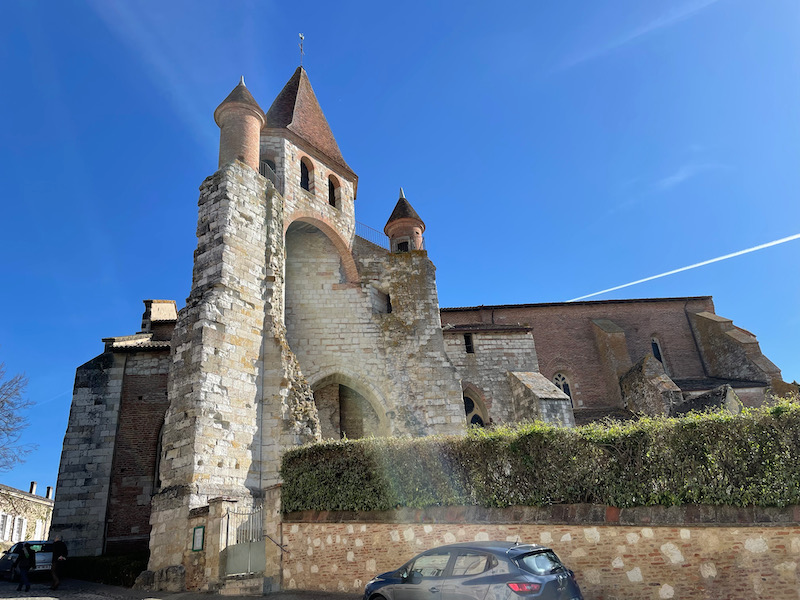
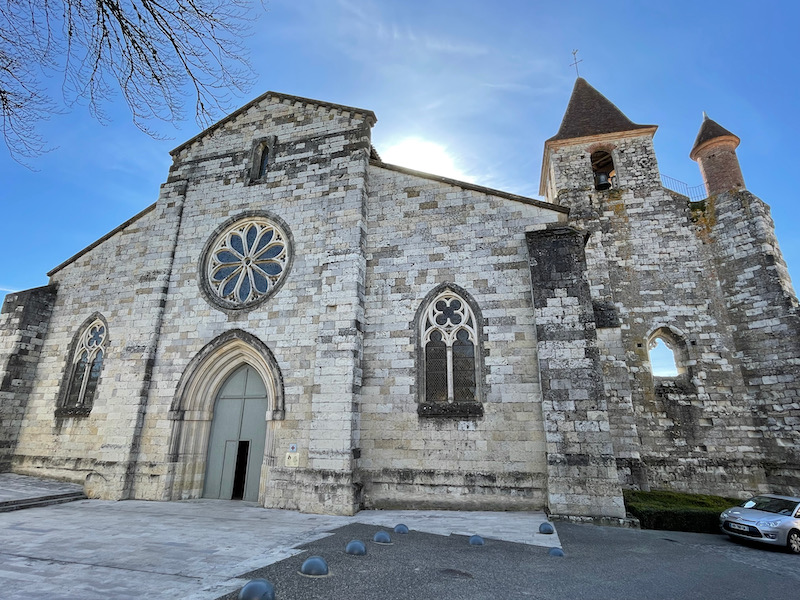
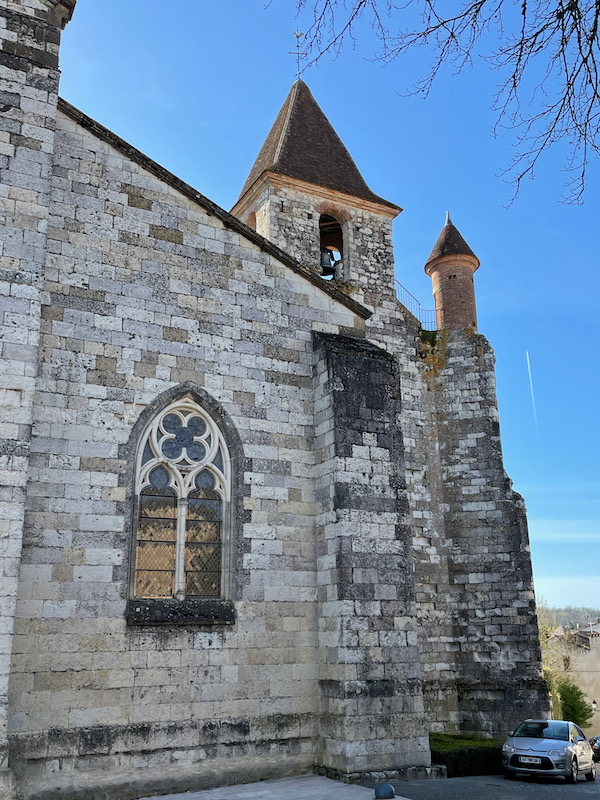
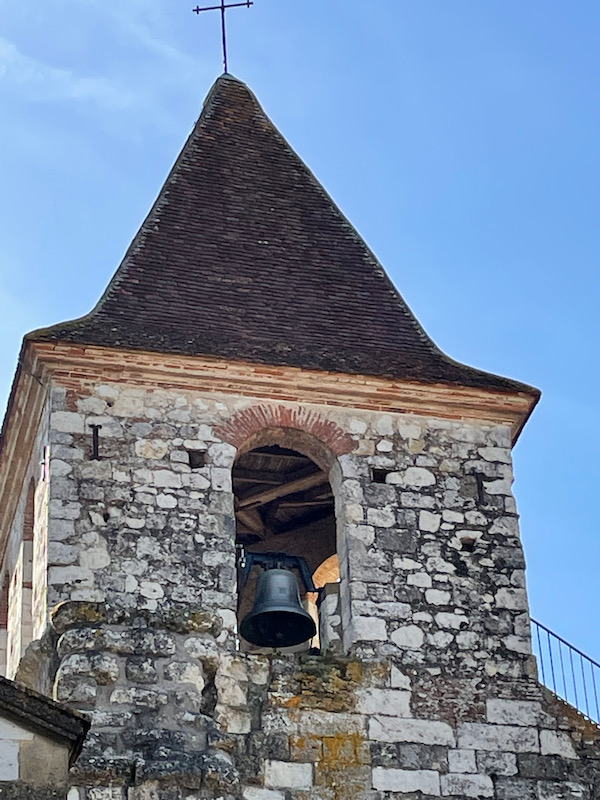
As you can see on the interior, it is quite Gothic now, and it is really in great shape as it was there was work done here in the 19th century.
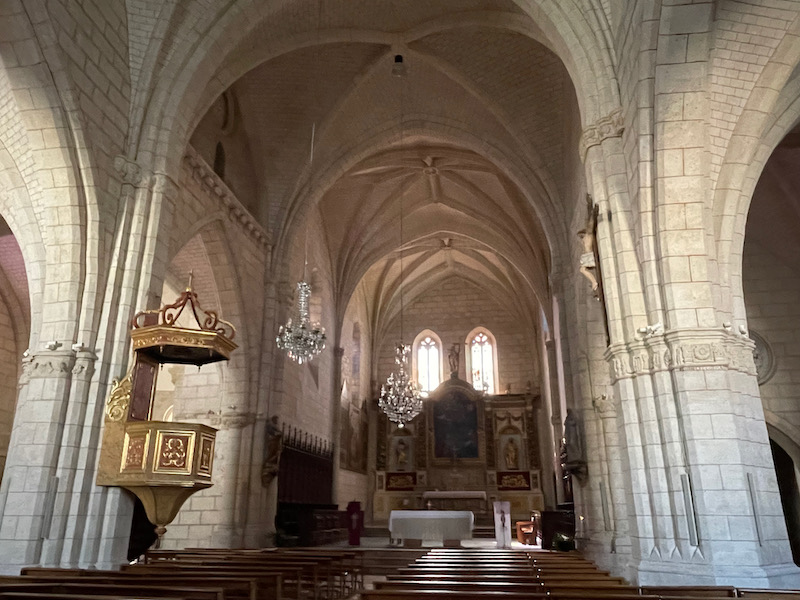
This is a nice set of paintings (called a polyptych) representing the Crucifiction of Jesus Christ, painted in the 17th century. In the middle is Jesus on the cross with his mother Mary and Saint John (the only apostle who didn't abandon him at his death). The detailed picture shows Saint Marguerite and a dragon.
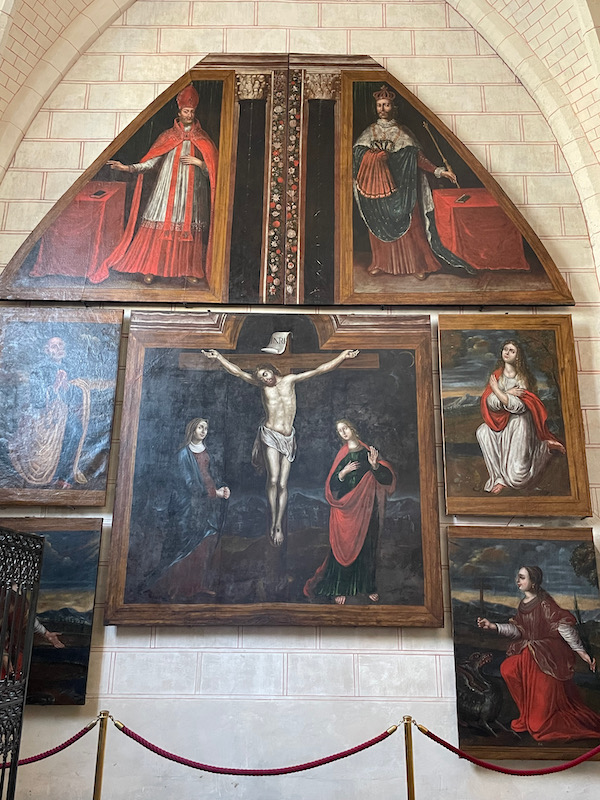
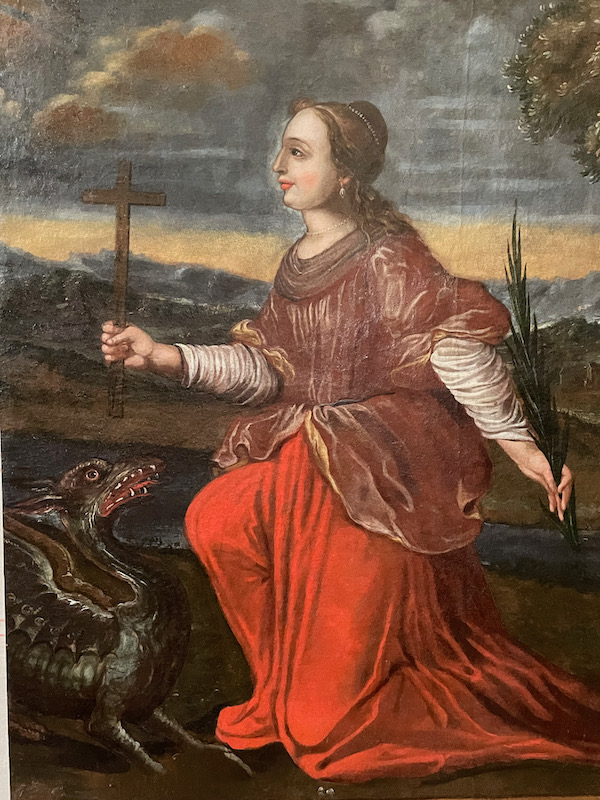
There was some restoration work done recently in the choir which uncovered old paintings, which is difficult to see but is there.
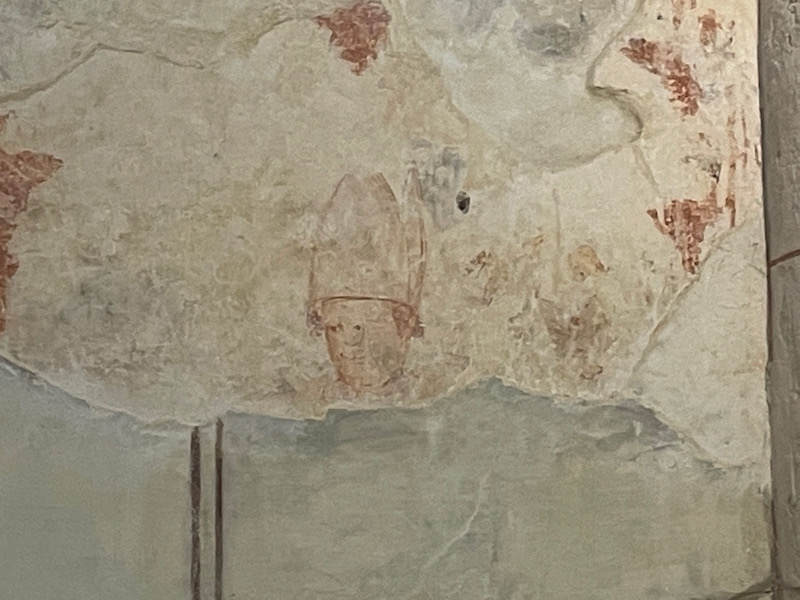
The main altarpiece is a masterpiece in Baroque design. The altarpiece is sculpted wood and dates from the 17th century. The central painting represents the Assumption of the Virgin, painted by Bern d'Henny, after a painting by Rubens. The statues are Saint John the Baptist on the left, and Saint Peter on the right.
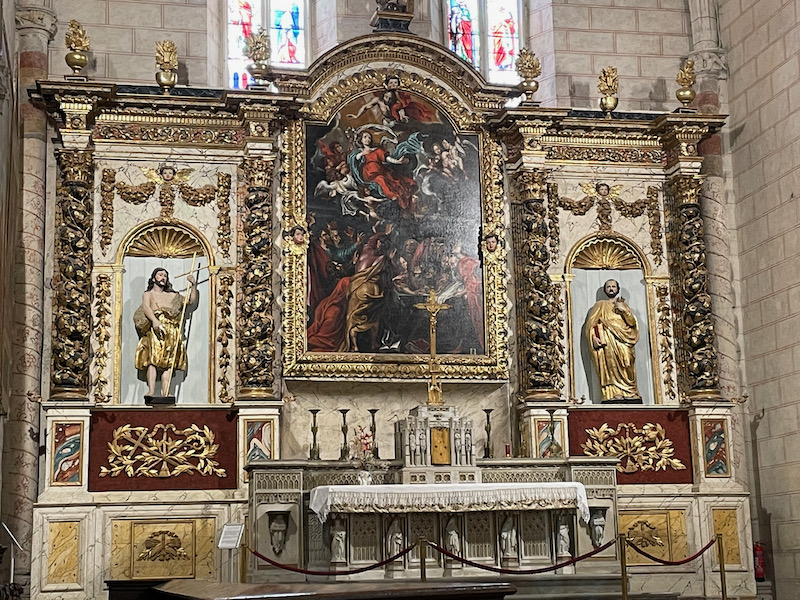
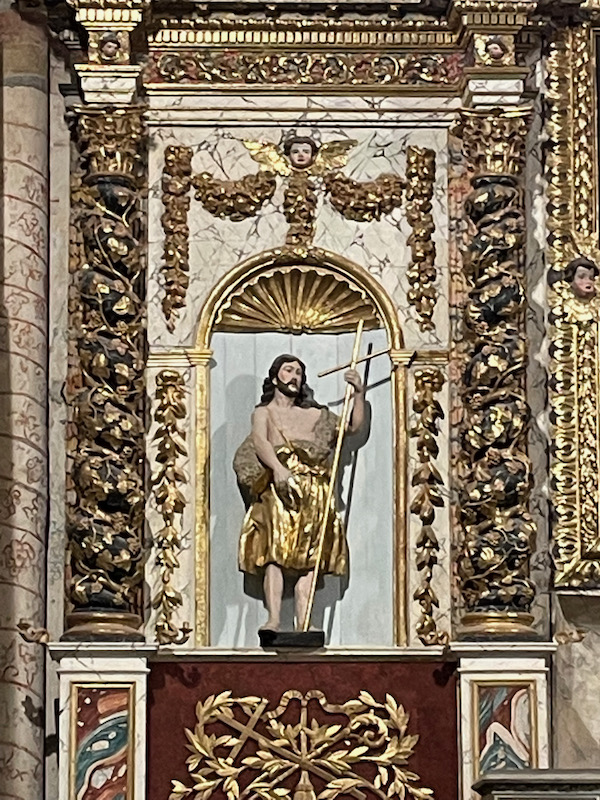
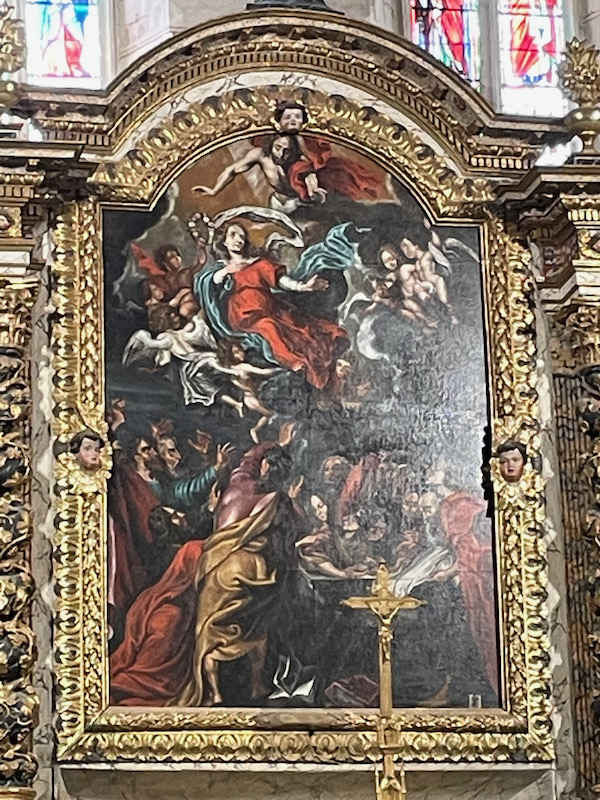
The Choir stalls date from the 19th century.
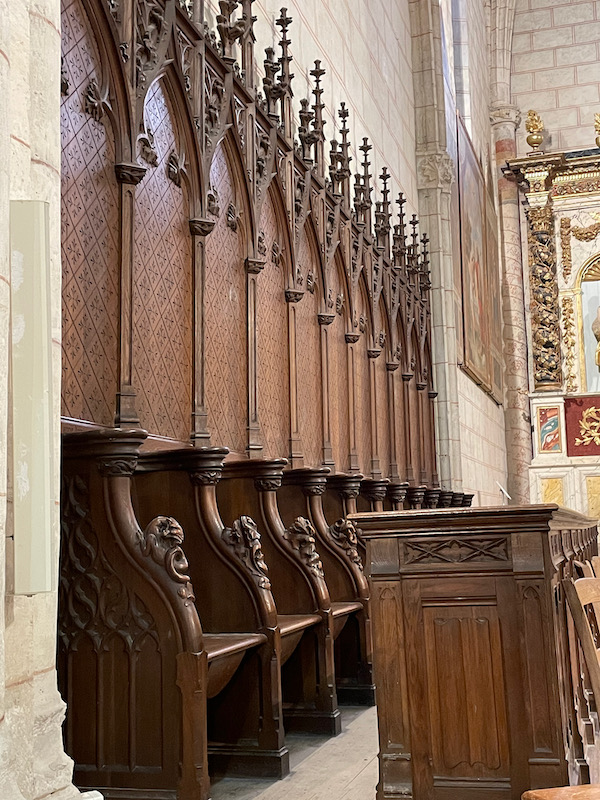
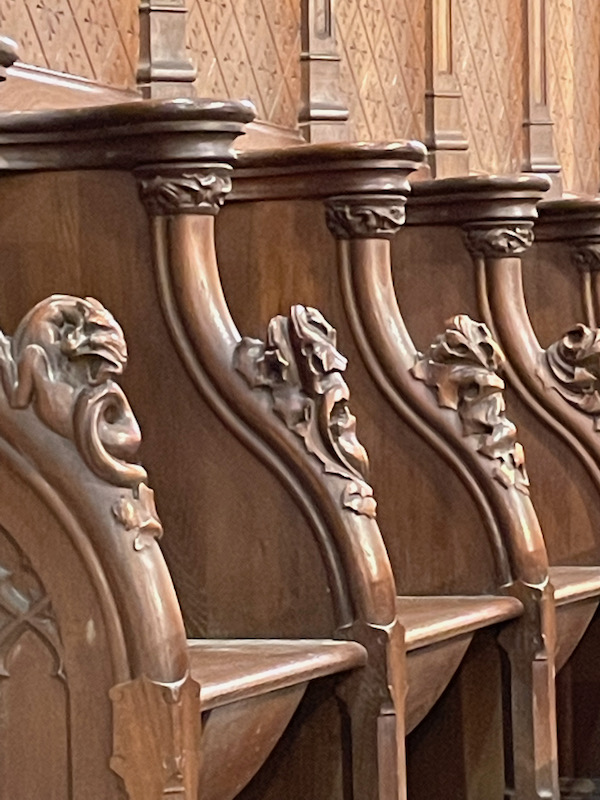
Right-side chapel is the Chapel of the Rosary. While there is a really lovely altarpiece, what was most interesting to me was all of the tree and greenery painted on the walls.
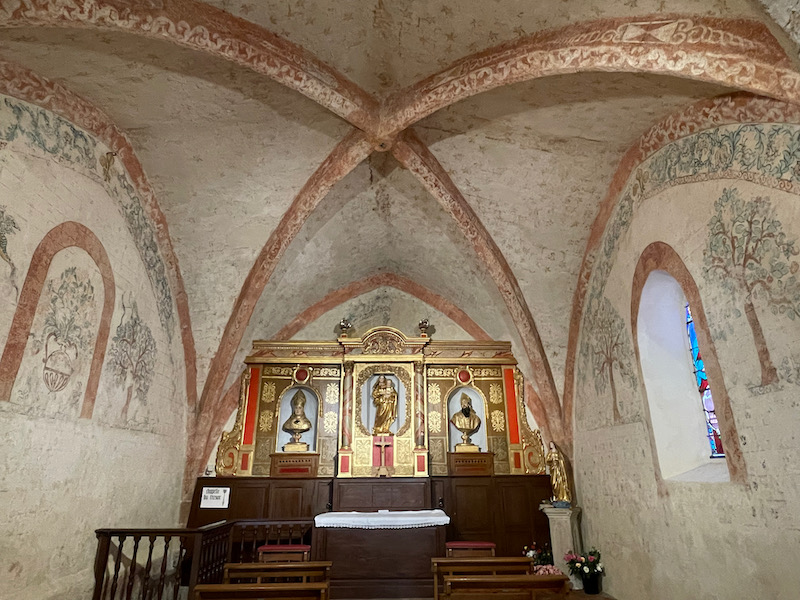
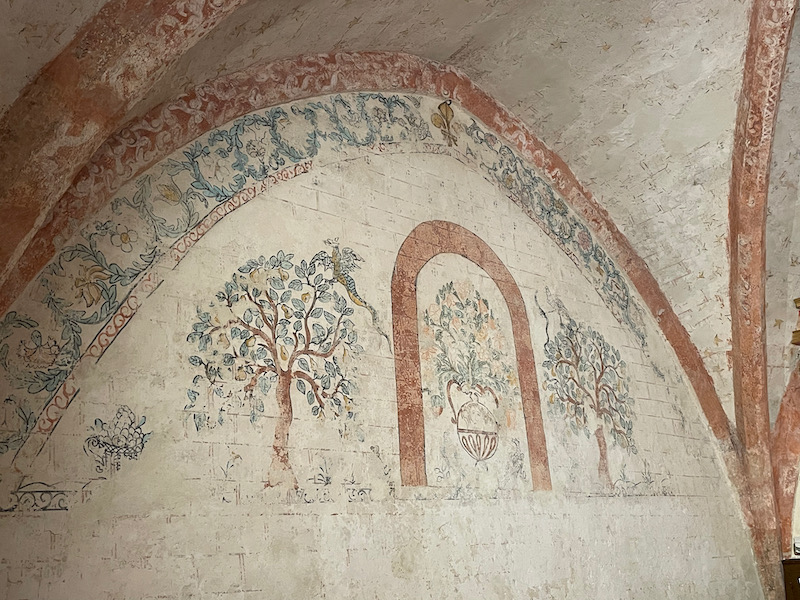
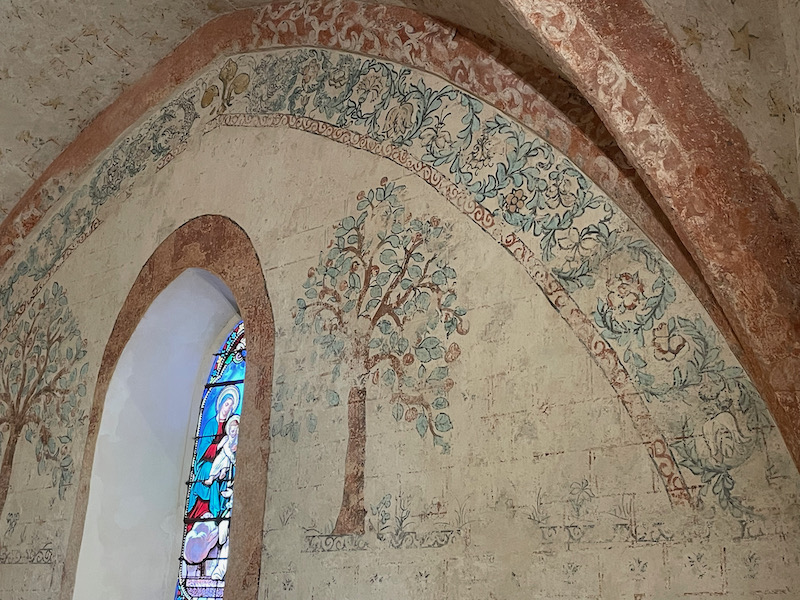
The stained-glass windows are supposedly done in the from a glass creator from Toulouse in the late 1800's, early 1900's. I say "supposedly" because Wikipedia gives the name of the glass artisan, but then the Wikipedia link for the glass workshop lists a set of buildings with stained glass from that workshop and this church is not in the list. So .... not 100% sure!
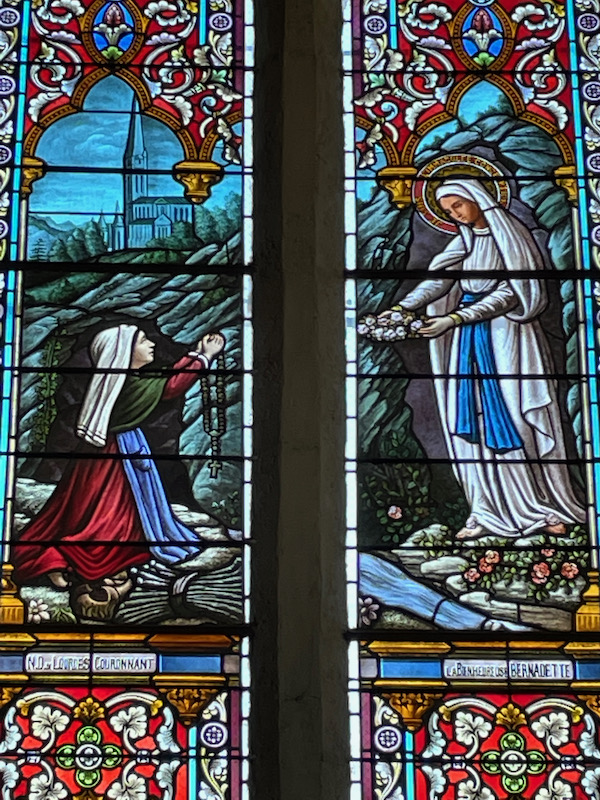
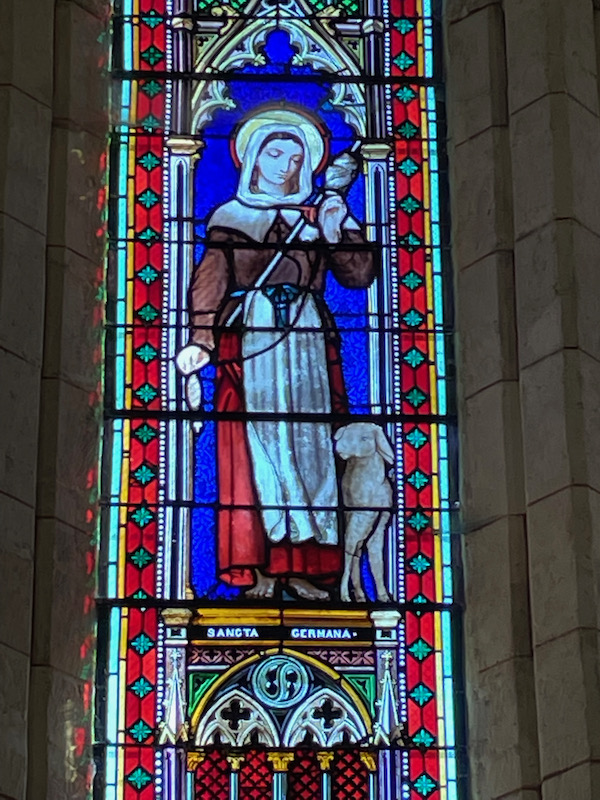
This is the first weekend where the flowers have really been blooming, showing that Spring is finally here. Here we have Lucy smelling the flower!
